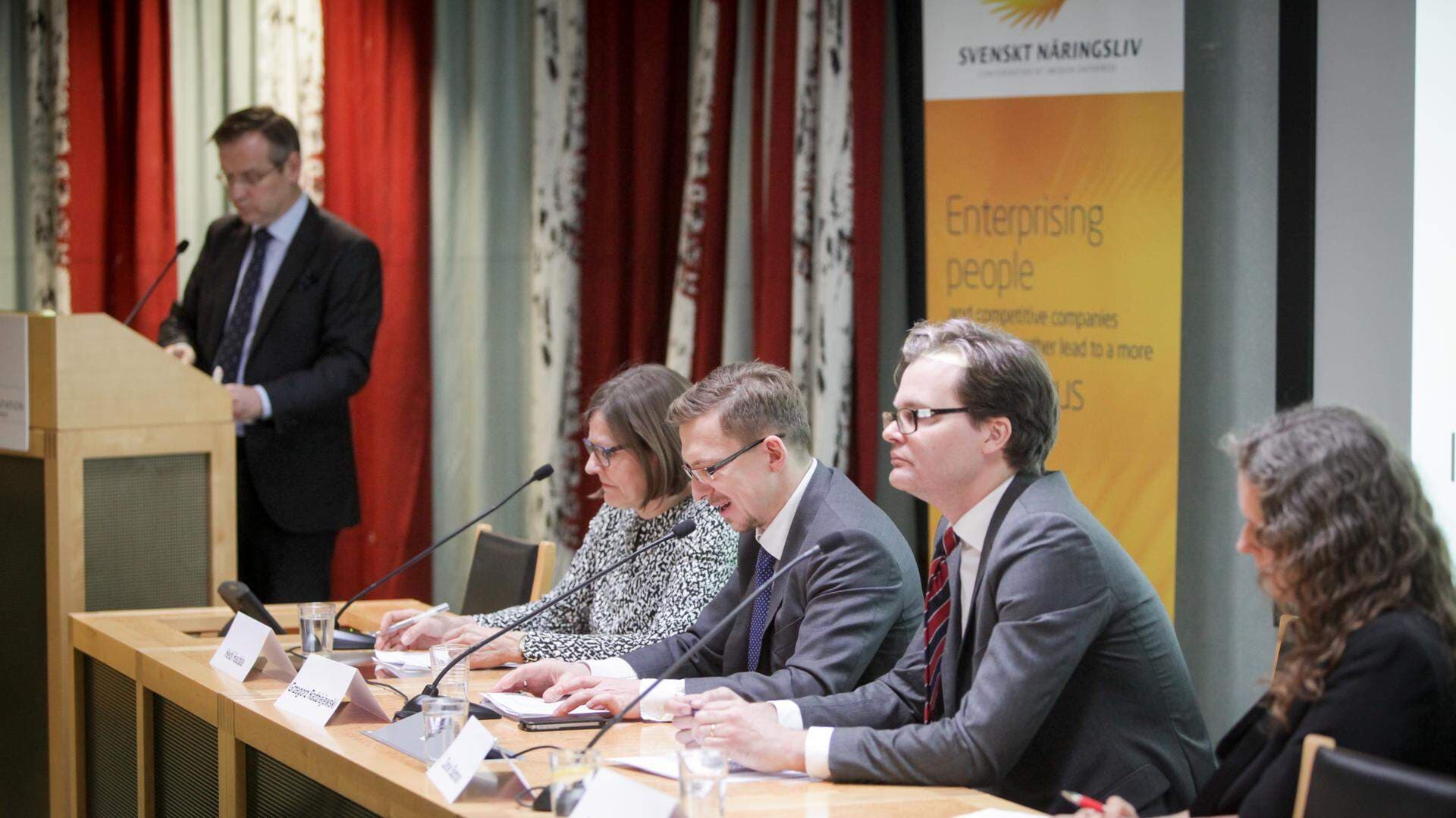Towards the circular economy – opportunities and barriers
In December 2015 the European Commission launched the Circular Economy package. The ambitious package aims at stimulating Europe's transition towards a circular economy, boost global competitiveness, foster sustainable economic growth and generate new jobs. But will this vision be successful and what will it take to achieve the ambitions? In order to discuss this topic, the Swedish Society for Business and Politics, SPN, organised a seminar in Brussels, in the premises of the permanent representation of Sweden.

Ambassador Åsa Webber welcomed participants to the Permanent Representation of Sweden and outlined the Swedish position on the package.
"We are happy to see this on the table and in general terms Sweden is supportive of the broader approach towards competitiveness, job creation, environment and climate change proposed. We are particularly interested in aspects such as better regulation, innovation and concrete implementing measures", she said
Grzegorz Radziejewski, from the European Commission, described the package, which includes more than 50 detailed proposals to be rolled out the coming next years.
"The package with its holistic and collaborative approach, to embrace both economic and environmental aspects, represents a new method in the global economy. We will move away from the old-fashioned, one-sided way of doing environmental policy, including a too narrow focus on targets, and instead look at tools and incentives in a global way. Also, without the economic “layer” the environmental ambitions will not fly as much as we want. For business there are cost savings to the amount of 600 billion euros per year if we can do this right and for the society as a whole we can achieve more wealth, more jobs and better environment and living conditions for all citizens. It could be a win-win-win situation", he said.
He added that the most controversial parts of the package so far have been the parts on product design and the creation of a secondary raw material market.
Pernilla Halldin, described how H&M as a global retail-clothing company with 4.000 stores in 61 countries, is already engaging in more circular business models.
"We are on our way to creating a “closed loop system”, where old garments are turned into new fashion. Our textiles are made of cotton or polyester – raw materials derived indirectly from land and oil, which are both finite resources. We have therefore launched a global initiative and given our consumers the opportunity to hand in unwanted garments, and receive a voucher in return valid in our stores. During 2014, we collected more than 7,600 tons of garments that were no longer wanted. That equals 38 million T-shirts. This way we save 56% of waste and 58% of energy."
"But barriers exist. There are questions in some member states about ownership and who has the right to collect textiles for recycling. Different regulations on waste and resources is another obstacle, and also, since we are a global retail company with our important suppliers in Asia, we need to make them able to buy the unwanted garments from other parts of the world. Overall, we want to see support for voluntary initiatives and rules, which are incentive-based", she concluded.
Daniel Badman, from Billerudkornäs, the Swedish provider of renewable packaging material, said that the paper industry has alredy been practicing circular business models for a long time.
"Material-efficiency makes business sense. Our resources come from well-managed forests. Our paper and packaging materials are based on a renewable resource that can be recycled in other packaging and paper products. We have a lot of biomass resources in Sweden and the rest of northern Europe. Trees are a fantastic resource. Everything that can be done with oil can be done with trees. Every piece of the tree can be used, whether it’s about products such as packaging or furniture or other parts for energy purposes. We support a holistic, enabling and collaborative approach which looks at the whole circle of the economy", concluded Badman
Heidi Hautala, Finnish MEP from the Greens, started with what she saw as a good example of committed business: the Finnish textile manufacturer Finlayson, which collected used bedsheets in order to make rag rugs. Towards the commission package, however, she took a more conventional approach.
"I think it represents a good first step. We will leave behind a piecemeal approach and look at all aspects in the circle and give a new role to governments, businesses and NGO:s, but we must not forget to keep the pressure up. Incentives alone do not always work. We need to set targets, for instance on material-efficiency or to issue guidelines and a voluntary code of conduct for responsible business. I look forward to working with the Dutch presidency on this issue", she said.
Jens Hedström head of the Brussels office of the Confederation of Swedish Enterprise moderated the seminar. It was held in the Permanent Representation of Sweden in Brussels and gathered around 60 participants from European institutions, business organisations, trade unions, NGO’s and other stakeholders.